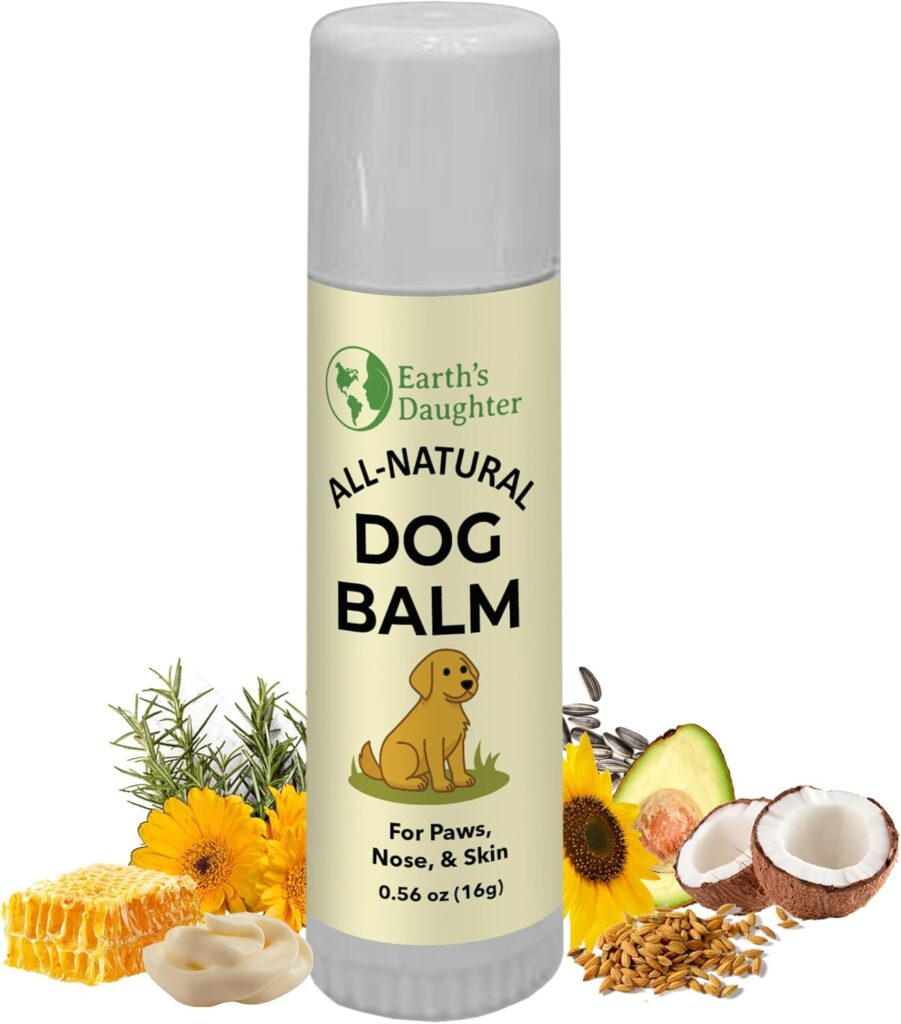Dogs rely on their paws for everything: running, walking, jumping, and exploring their environment.
But just like humans, their feet can experience wear and tear, sometimes leading to cracked or dry paw pads.
Cracked paws are not only uncomfortable for your dog, but they can also lead to infections if left untreated.
The good news is that there are simple, natural ways to soothe and repair your dog’s paw pads so they can stay healthy, happy, and active.
In this post, we will explore 5 ways to support cracked paws, starting with their causes.
Let’s dive in!
What Causes Cracked Paws?
Cracked dog paws can be caused by a variety of factors.
Harsh weather, like extreme heat or cold, can dry out the pads.
Rough surfaces such as concrete or gravel, excessive licking, allergies, or even certain medical conditions can also contribute.
Over time, these factors can leave paw pads dry, irritated, and cracked, making your dog uncomfortable and even affecting their mobility.
5 Ways to Support Cracked Dog Paws
1. Dog Paw Balm
Using a high-quality dog paw balm is one of the most effective ways to heal cracked paws.
Paw Balms provide natural moisturizers such as beeswax and calendula to soothe, hydrate, and protect your dog’s paw pads.
Out of all of the paw balms my dog has tried, Earth’s Daughter’s new Dog Paw Balm is his personal favorite.
This dog paw balm is a gentle, lick-safe solution designed to soothe and protect dry, cracked paws.
Made with organic beeswax, coconut oil, calendula, and lanolin, it nourishes and supports natural healing while calming irritated skin.
Compact and mess-free, it’s perfect for walks, travel, or everyday use, and its versatile formula works on noses, hot spots, and sensitive areas too.
Proudly made in the USA with clean, natural ingredients, it offers comfort for dogs of all breeds, including puppies and allergy-prone pups.
Simply apply to your dog’s paws and/or nose daily, and you’re good to go!
2. Limit Exposure to Harsh Surfaces
Reduce your dog’s contact with hot pavement, icy sidewalks, and rough terrain whenever possible.
Consider walking your dog on grass, dirt trails, or using dog boots during extreme weather.
This protects the sensitive paw pads from additional damage and gives them time to heal.
3. Keep Paws Clean and Dry
Regularly washing your dog’s paws with mild, pet-safe soap and thoroughly drying them helps prevent infections and irritation.
Moisture trapped in the paws can encourage bacterial or fungal growth, which can worsen cracks.
After walks, check for debris like small stones, salt, or chemicals that could cause further damage.
4. Provide Nutritional Support
A balanced diet rich in omega-3 fatty acids, vitamins, and minerals can promote healthy skin and paw pads.
Supplements like fish oil can help maintain hydration and elasticity in your dog’s paw pads from the inside out, supporting faster healing and stronger, healthier paws.
5. Regular Paw Massage
Gently massaging your dog’s paws can improve blood circulation and help distribute natural oils throughout the pads.
This not only soothes discomfort but also encourages the skin to repair itself.
A few minutes of daily paw massage can make a noticeable difference in your dog’s paw health over time.
Support Cracked Paws
Cracked dog paws are uncomfortable for your furry friend, but with consistent care, they can heal and stay healthy.
Using a nourishing paw balm, protecting paws from harsh surfaces, keeping them clean, supporting them nutritionally, and massaging them regularly are all simple steps that make a big difference.
By taking proactive measures, you can ensure your dog’s paws stay soft, strong, and ready for every adventure.
Thank you for reading!
Affiliate Disclosure
Some of the links on this site are affiliate links. This means that if you click on the link and purchase the item, we may receive an affiliate commission at no extra cost to you. I only recommend products or services that I believe will add value to my readers, however some (not all) do pay us to be on this blog. Your support and theirs helps keep this blog running, and I genuinely appreciate it.
Medical Disclaimer
The information provided on this website is for educational purposes only and is not intended as medical advice. The content shared here is not written by a licensed veterinarian, and it should not be used as a substitute for professional veterinary diagnosis, treatment, or advice. Always consult with your veterinarian or other qualified pet healthcare provider before starting any new treatment or making changes to your pet’s health regimen.
